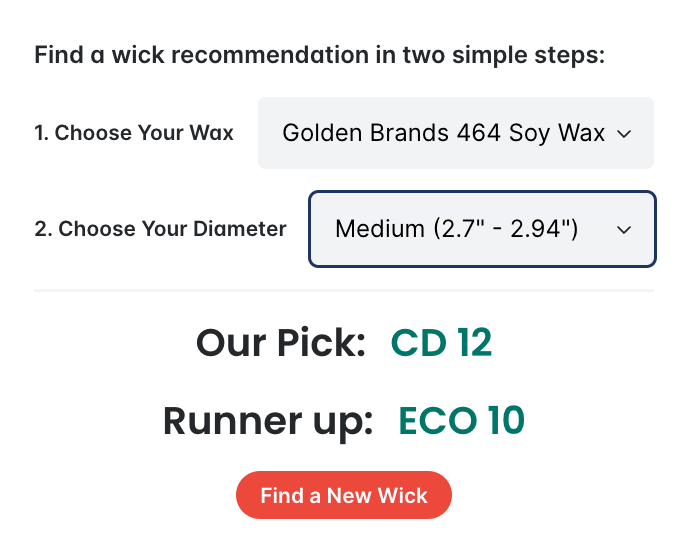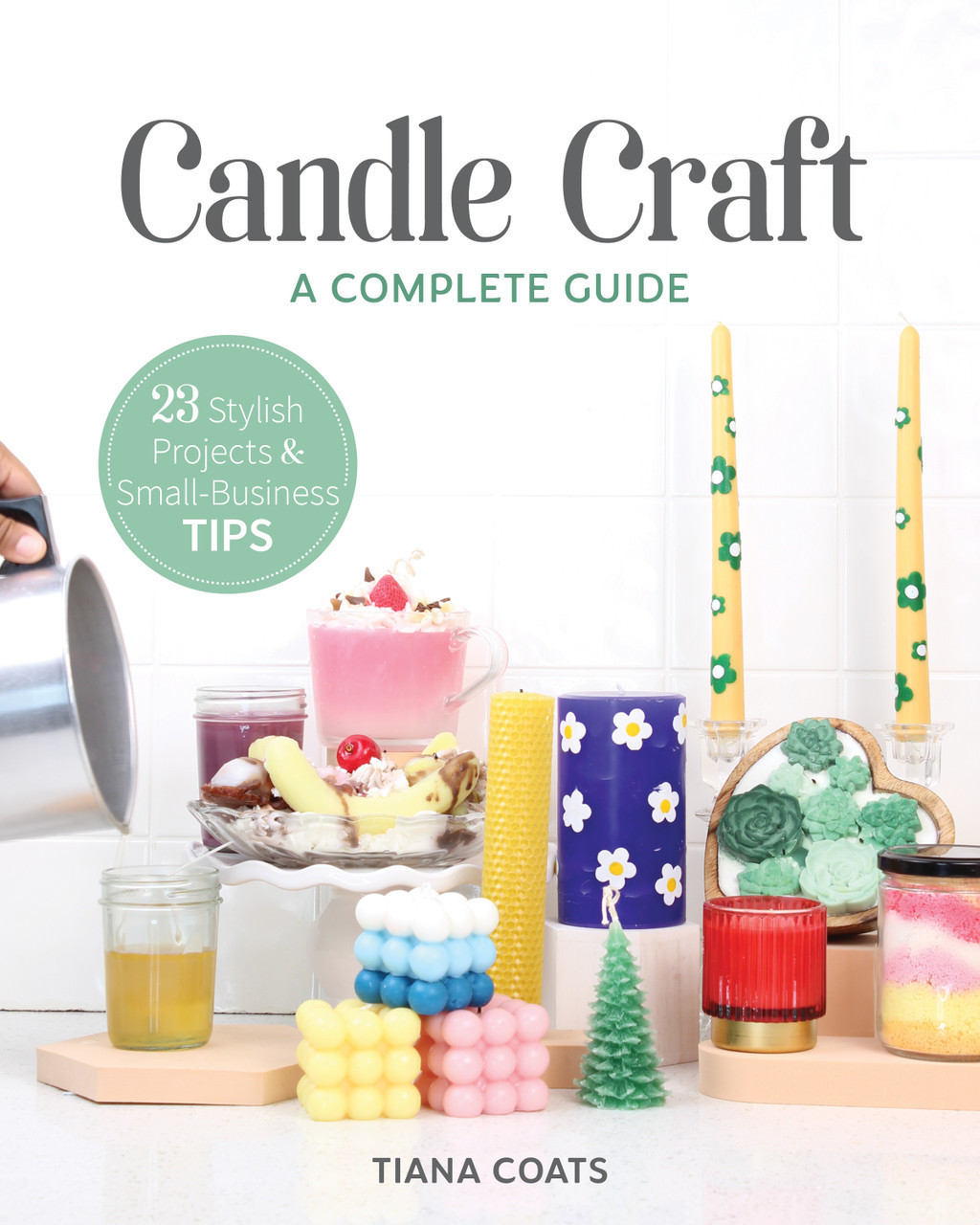This post contains affiliate links. I may receive a commission if you purchase an item or service I recommend at no extra cost to you. I only recommend products or services I use and love.
One of the most common questions I receive from new candle-makers is about the legal requirements for selling homemade candles. See, the thing about candle-making is there isn't many legal restrictions here in the U.S. so it is up to the maker to produce safe, quality candles.
There are some guidelines that you should strongly follow if you want to be a successful and responsible business owner.
In this post, I will go over best practices for creating and labeling your candles. So, keep on reading!
Where can I make candles?
More than likely, you are probably going to start making candles from home. Before you start investing money into your candle business the first thing you should do is make sure you are allowed to make candles from home.
Making candles from home
If you are renting a house or apartment there may be a clause in your lease that prohibits you from running a business from the residence. Check up on your lease, and check with your landlord to see if you are not breaking any terms by starting a candle business from home.
It is also important to have renter's insurance prior to starting a candle business from home.
If you own a home check your insurance policy. You want to ensure that your investments are covered.
Making candles from a leased studio
If you do decide to get a small studio to make candles the first thing you need to do is get a certificate of occupancy from your city.
When I opened my candle storefront, I contacted my city so they could come out and perform an inspection.
To pass the inspection, they checked my electrical, fire hydrants, emergency exits, and I had to be ADA compliant.
Before you even begin operation in a leased commercial building you must have a valid certificate of occupancy from the city and the proper insurance for the building.
The insurance provider I use is Indie Business Network.
Related: How to start a candle business from home
Safety Regulations
I can't stress candle safety enough. Pouring wax into a container with wick is easy and anyone can do it. There is a low barrier to entry with this profession, and I have seen some unsafe candles make their way on to the market. Here are some things to know if you want to create safe candles.
Creating a safe burning candle
It is important to learn the science of how a safe candle is created. The wicks, wax, container, and fragrance oil all need to be in balance so the candle will burn correctly.
The first thing you need to do it test out different wick and container options. Measure the diameter of your container, and use the Candlescience wick guide to get and idea of what wicks to start with.
↓Here is an example of how the wick guide works↓

Source: Candlescience.com Wick Guide
You can see how you can narrow down your wick selection with this guide. It is important to note that this is just a guide.
You still need to do adequate testing to make sure the wick is perfect for your candles. Whenever I am testing out new wicks I like to get a smaller wick and larger wick than what the guide suggested so I can conduct a thorough test.

Using the suggestion above, I would purchase the ECO 8,10, and 12 wicks and test with those three to make sure I am choosing the best wick.
Do a complete test burn with each new vessel you use. It is important to test the candle completely to get an idea of how the candle burns. Be patient because the testing phase can take a week or so for each candle.
Burn the candle in 4 hour increments and make note of these things:
The most dangerous thing you can do is overwick a candle.

Over the years, I have learned that many candle consumers don't know that they should be trimming their wicks in order to properly burn a candle.
This can be a pain for candle makers because a candle that burns perfectly for you may become a hazard if handled incorrectly.
To prevent this, try conducting stress tests with your candles. This means to carefully watch how your candle burns when the wick is not trimmed. Also, test to see how the candle burns when lit for over 4 hours.
The goal is to create a candle that can burn perfectly when directions are followed, but will also not be a hazard if a consumer were to improperly care for the candle.
This is a balancing act that may take many iterations, but don't give up and keep on testing.
Labeling Requirements
Having a warning label is a must when selling or giving away candles. The purpose of this label is to instruct the consumer on how to properly burn and care for the candle.
The FTC has labeling guidelines on their site. You can read over the guidelines to make sure you are getting all the required information on your warning labels.
Here is a summary of of what you should include on your warning labels:
I know many of you working from home will not want your home address plastered on every candle label.
Here is the guideline with more details about putting an address on labels. This guideline states that you can omit the street name if your address is in a public directory or on a webpage on your site.
If you registered your business for taxes then you are in a public directory that someone could look up if they needed to.
So instead of putting your full address on a label you can instead say:
Candles handmade in (City), (State)
If you are looking for a custom warning label template - I've got you covered. Check out my Canva Warning Label Template here.
Legal Requirements for Selling Homemade Candles
Taxes
Let me start off by saying I am not a tax professional so I can't give you detailed tax advice. What I can do is tell you what tax IDs you will be needing if you are serious about starting a candle business.
Federal tax ID (EIN number)
To register your business with the IRS you will need an EIN number. This may sound complicated, but it is an easy and free process.
Your EIN number is similar to a social security number, but for your business. This is the number you will need when filing your taxes. Also, this number is needed for many other business transactions.
To get an EIN number go here.
Sales tax ID
If you plan on attending local markets you may be asked for your sales tax ID. This document means that you are registered with your state to pay sales tax.
To get a sales tax ID you will need to find the website for your state's comptroller. Google (your state) comptroller site. From there, you will be able to sign up for a sales tax ID.
Once you are registered, you will be required to report and pay sales tax every quarter.
Small business taxes
If all of this tax talk is already stressing you out don't worry. Years ago I was stumped when trying to figure out the legal requirements for selling homemade candles. Luckily, I found Janet Leblanc from Paper + Spark. Her courses and products helped me immensely. I even brought her on as a speaker for my course, Candle Biz Academy!
If you want to learn more about small business taxes here is a link to her site. I would suggest going through her Get Legit Toolkit course if you are a total newbie.
Conclusion
We went over quite a bit of information. I hope you got some insight on the legal requirements for selling homemade candles. If you have decided to jump into candle-making then check out my post on how to make soy candles.
Check out my Candle Book!
Candle Craft, A Complete Guide
23 Stylish Projects & Small-Business Tips



Cart